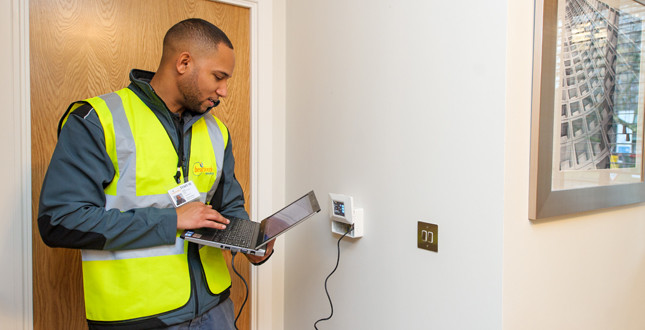

Data gathered from heat networks can be used to drive-down energy costs, and that’s exactly the kind of help customers want. Anthony Coates-Smith, Director at Insite Energy, explains why.
Changes in home heating are bringing new business opportunities to domestic heating contractors and installers. A good example is the increasing number of residential buildings with district or communal heat networks, where there’s the chance to gain many new customers in the same building by offering something they all want – affordable equipment and information to help them reduce their energy bills.
As more people in the UK move into high-density housing, centralised heating systems are gaining popularity because they are much more energy efficient and environmentally-friendly than having individual heat-generators in each home. But residents always want to know if there are ways they can reduce their energy bills further, and operators of heat networks need to know if their heat-generation and heat-distribution systems are working efficiently.
Answers for both can be found in heat metering systems. By gaining a good working knowledge of heat meters, installers and heating contractors can become experts who customers will listen to and buy from. This is especially true now that residents are beginning to see horror stories in the press about some heat network end-users being hit with heating costs two or three times higher than they’d expected.
Dispensing information and advice is made easier by the Heat Network (Metering and Billing) Regulations, introduced three years ago but still not widely understood. The Regulations are designed to ensure that residents of flats are provided with accurate, detailed and transparent billing for their heating, cooling and hot water by their heat supplier (which usually means their landlord or housing association).
The law requires residents to be billed only for actual, not estimated, energy consumption. To give residents more control of costs, their meters must accurately measure, memorise, and display the energy consumption for heating and cooling.
Meters, however, vary enormously in quality and capability. We’ve seen this first-hand during our work at Insite Energy, where we provide metering, billing and payment services to more than 180 heat networks and 28,000 end-customers across the UK. Cutting corners with cheap meters (or cheap heat interface units) is a false economy because they cost more to run and need replacing sooner.
The best meter system in our experience, the Guru Hub, gives residents real-time information about energy use, costs and carbon emissions through an easy-to-operate touchscreen interface. The Hub is also the only system which can transfer data real-time via broadband to the heat metering and billing provider. The system’s capability for remote fault diagnosis means that heat supply anomalies can be flagged-up, diagnosed, and resolved remotely. This proactively prevents end-user complaints and prolonged energy waste.
These metering capabilities are resulting in masses of data being collected, and this has usefulness way beyond complying with the Regulations. Data gathered by user-level and building-level heat meters can also enable energy reporting and analysis, to help identify sources of heat loss or inefficient operating practices in heat networks.
This is important because too many heat networks, old and new, are poorly set up or managed. Meters can identify where remedial action needs to be taken and, when it is, there will be ongoing savings in energy costs, and probably also reductions in maintenance costs and capital replacement costs. Where the Guru is installed, we have seen tariffs reduced from about seven pence per kw of heat to as little as three pence. This is the kind of technology customers willingly pay for.
There is another commercial opportunity here. It’s not only newbuilds and major refurbishments with heat networks where there’s a legal obligation to install customer meters. Buildings with heat networks constructed before the introduction of the Regulations in December 2014 must also comply.
The government is currently preparing a revised ‘viability tool’ or ‘calculator’ (the first one didn’t work well) which determines whether or not a metering system must be installed. Where it’s calculated that a system should have meters but their installation is not technically feasible, the Regulations require instead the installation of Heat Cost Allocators, hot water meters, and thermostatic radiator valves to measure the consumption of end-users. And that’s something else heating contractors and installers can profitably be helping with!
Insite Energy can be contacted by telephoning 0207 036 9117 or emailing info@insite-energy.co.uk.
If you'd like to keep up-to-date with the latest developments in the heating and plumbing industry, why not subscribe to our weekly newsletters? Just click the button below and you can ensure all the latest industry news and new product information lands in your inbox every week.